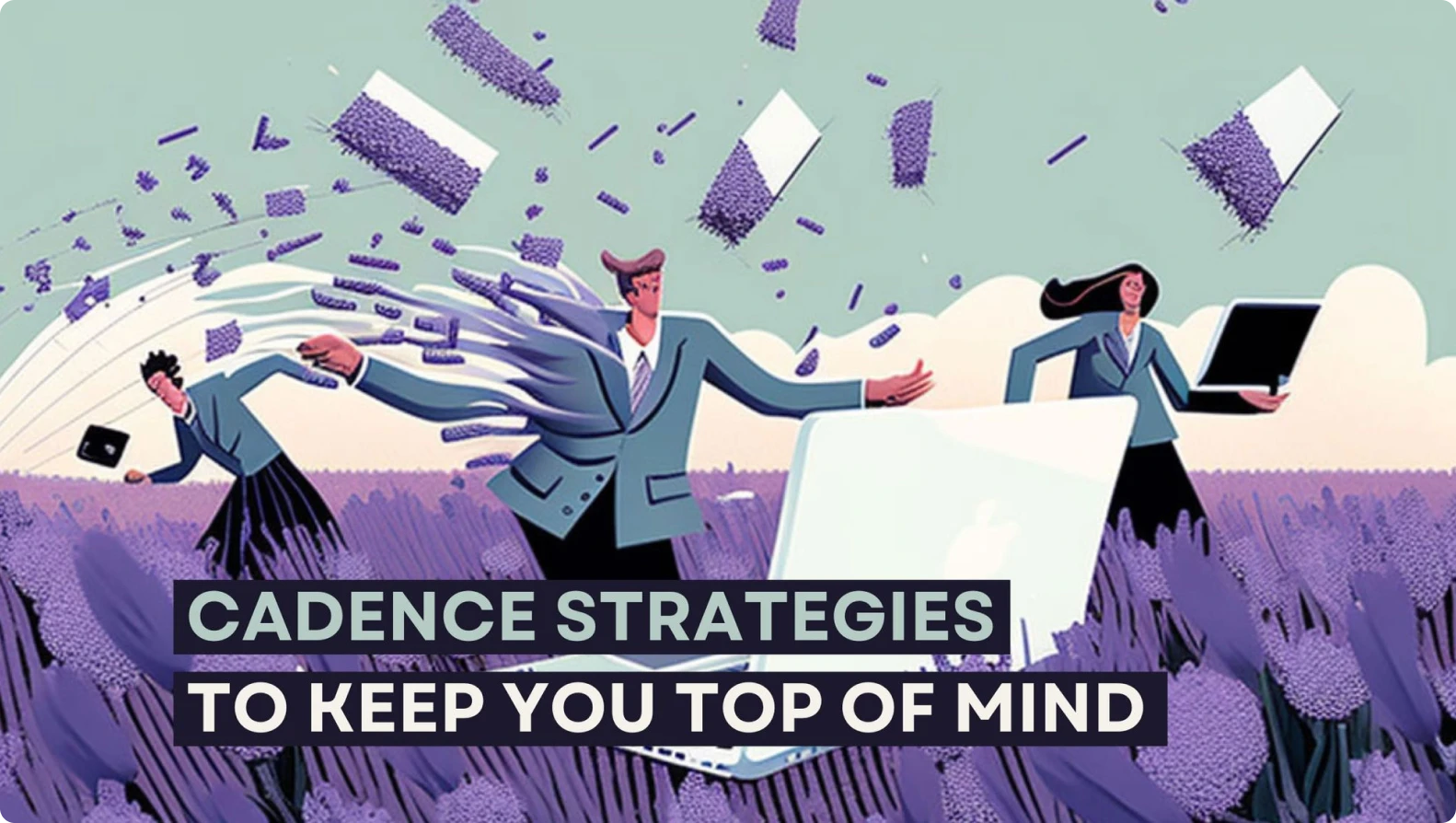Email Cadence Strategies to Keep You Top of Mind
Sometimes an effective cadence doesn't have to be long. Sometimes it's better off being... small. Steal our mini-cadence strategy for more meetings.

Let's get real. If you've ever been chased by a seller, you've learned to recognize their email in your inbox. You really don't even have to open it.
When you run your prospects through marathon cadences, you 🔥 burn 🔥 your TAM.
💡 TAM = Total Addressable Market, or more simply, a calculation of all the folks who could buy your stuff. 💡
That's right. Your company's sales outreach strategies could be limiting its potential.
Cadences should be built around a reason to reach out.
Primarily these reasons should be both externally and personally driven. External meaning it's not an event related to you or your company. Personal meaning directly related to the prospect and their experience at their company.
ex. "Hey, I saw you're hiring sales reps in EMEA."
This gives you a hyper valid excuse to show up in their inbox and interrupt them within their to-do list.
Show up. Be polite. Be gone. Your cadence really shouldn't have more than 5 emails in it. If you're multi-channel, 3 - 4.
Here's the one fault of this approach.
You won't always have a valid to reach out... but they look like a good prospect, or the timing is right... or something happened that's noteworthy.
How do you engage?
I propose we start using mini-cadences.
The reason to be there is potentially external, but it's not personally driven. You lighten these cadences up.
When To Use a Mini Email Cadence
Here are three good examples of reasons to start a mini cadence:
1. Time of the year
Think about ecommerce. It's a very cyclical industry. Folks tend to do the same things at certain times of the year. Q1 is all about testing and exploring. Q4 is curtain call. Most holiday season tech stacks are already set.
Talking to those triggers shows them that you "get it."
Other seasonal examples:
- End of Quarter
- Tax Season
- Summer / Back-to-school
- Holidays
2. A marketing event (first or third party)
Companies put on amazing events and put out great content. We wish you'd share them with us! Your prospects do to.
"Hey do you follow ___? They dropped an awesome post about the importance of ___. Thought you'd enjoy given you're ____.
or
Hey, we're hosting this webinar on ___. Given ___ I thought you might enjoy.
No pressure, but would love to see you there.
Hope it helps.
3. Customer conversations
Hey, I was just talking with ___ at ___. Given they're in your space I thought this might be a challenge you're also dealing with.
Now, I can't share everything they're doing. But, would love to connect if you're seeing similar things.
The follow ups are still important.
You can just bump the original note and say something like "I thought you'd find this article on writing better emails interesting. Did you have a chance to check it out?"
Or if it's more fitting (say a time of year campaign) you can lean into things like context driven bumps (kind of like the one above) or rephrasing the original message.
Let's use the customer conversation example:
Email 2: (day 3)
Hey,
Given my conversation with ___, I thought ___ might be relevant to you right now.
Did you have any feedback on my note?
Email 3: (day 6)
Hey,
Usually when I talk with ___ leaders, I hear ___ is top of mind. '
That's why my conversation with ___ made me think of {your company}. We help teams with ___ with our ___.
Worth taking a look?
It's a short series, but it keeps you top of mind with the prospect without burning them out.
As a rep, you should feel more confident that you're not "being a pest."
PS. Don't say that.



.png)

.png)